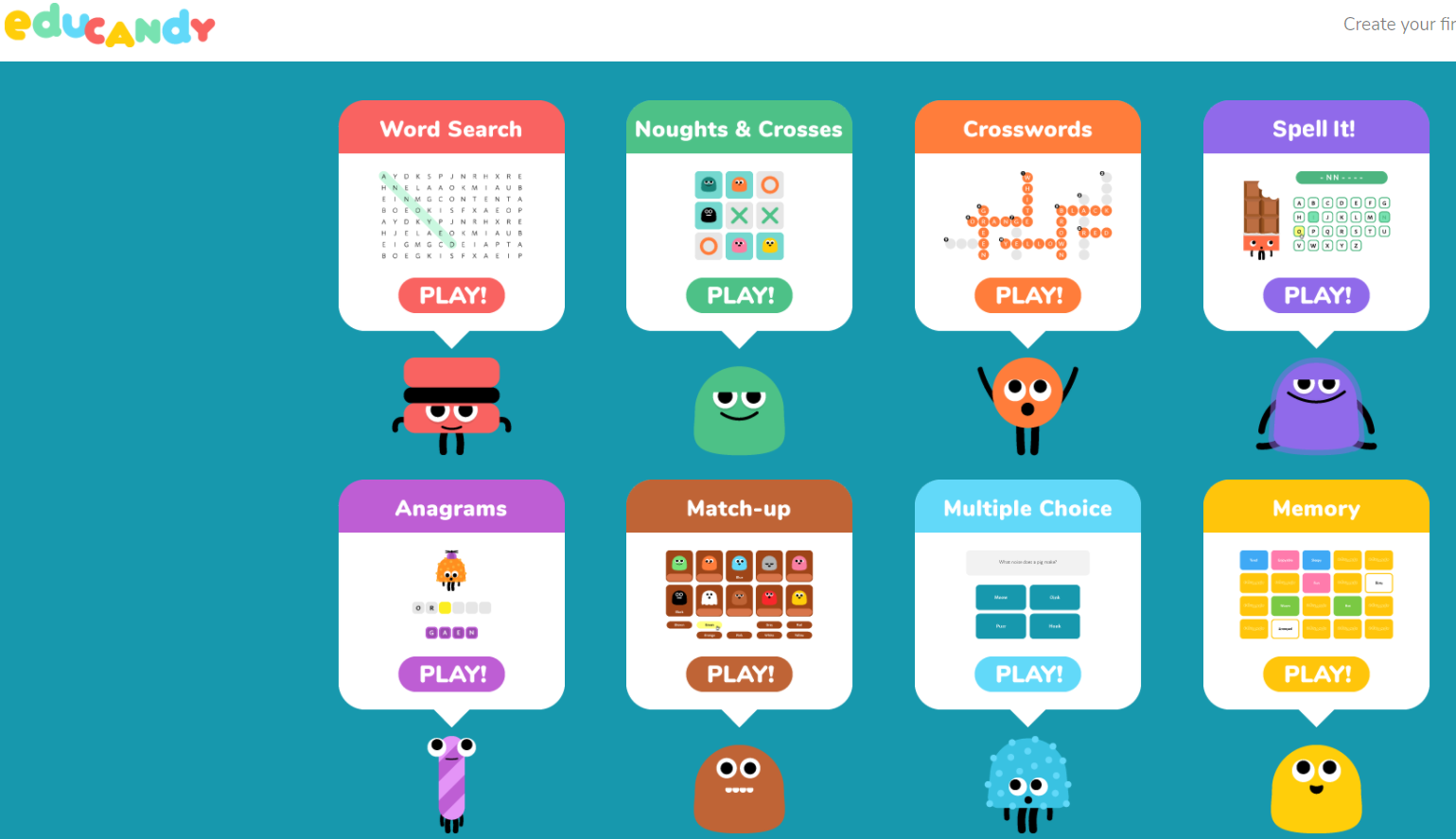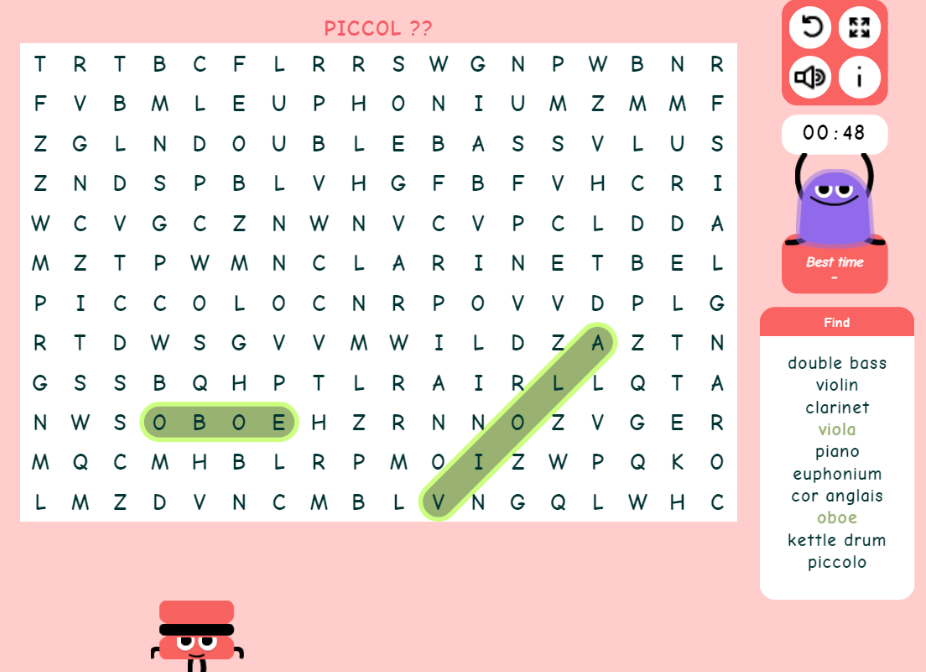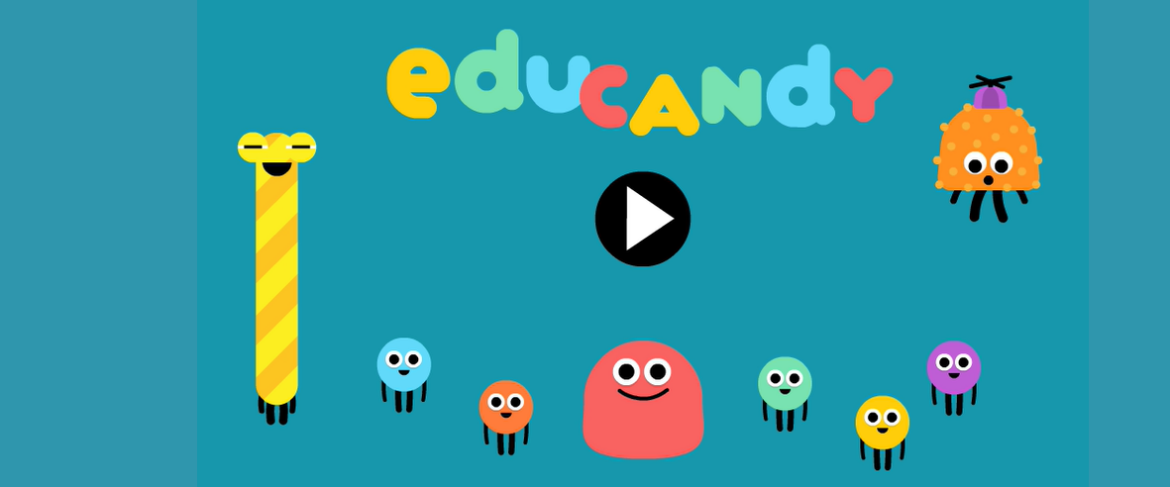Ready to make learning sweeter? Give a newcomer in the game-based formative assessment toolkit a try. Educandy makes it easy to create (or adapt from those created by the community) and share digital quizzes. In this blog entry, you will see some of its features in actions. A short video step by step also appears at the end of the blog.
Before we jump into Educandy, let’s revisit relevant strategies that work.
Strategies That Work
You may already know of several relevant, high-effect-size instructional strategies. Each supports the use of quiz tools like Educandy, Kahoot, Blooket, and Quizziz. Let’s do a quick review of four relevant strategies that may apply when using these types of tools. (As a reminder, an effect size of 0.4 or higher means that the particular instructional strategy will give one full year of growth or more when used with students. An effect size of 0.8 will give two years, and an effect size of 1.2 will give three years of growth.)
- Mnemonics (d=0.80). Mnemonic instruction works for students with learning problems. That includes those students with learning disabilities. The Visible Learning Meta X database defines mnemonics as “a practice by which students learn a significant amount of information for long-term recall by memory.” You can see the connection between rehearsal and mnemonics, right? Both are aiming for long-term recall.
- Rehearsal (d=0.73).One fun strategy that you may have relied on before is that of rehearsal. With such a high effect size, it’s important to know that it’s more than memorization. Some consider elaborative rehearsal as the preferred method. This approach better connects short-term learning to long-term memory by linking new information you want to learn to what you already know. Many of us have relied on the rehearsal strategy, elaborative in particular. Consider when you’ve created an image in your head or relied on a list or mnemonic.
- Spaced vs Massed Practice (d=0.65). This powerful strategy has us space out over time the intervals when we study information. This ensures that significant learning occurs. Combined with retrieval practice, you can make long-term memory connections for new information.
- Retrieval Practice (d=0.46). Also known as “practice testing,” this involves frequent testing. The research is in and it’s positive about “the testing effect.” Flashcards, practice problems, and writing prompts can improve learning. Learn more here.
Use Educandy to connect new information students need to learn to long-term memory. These four strategies make it possible. Let’s see how Educandy can make that happen.
Did You Know?
You can get access to a wealth of information on how strategies that work connect to digital tools. Wondering what technology to use with a particular strategy? Use the free, no-cost TCEA Strategies app on any device. Get it online at https://tceastrategies.glideapp.io.
Educandy: Make Learning Sweeter
Offering a variety of interactive elements, Educandy makes it easy for you to create:

With a guest account, you can complete these activities. For example, I jumped into a word search (what an interesting vocabulary connection):

Even when you make a mistake, Educandy gives you a hint as you can see above. I missed the “o” at the end of piccolo, a musical instrument, and it prompted me with two question marks.
You can create a free account. The process involves entering your email address (no single sign-on or OAUTH authentication yet). You then receive an email message with a link and can set your password. On the privacy side of things, only the teacher is putting their email at risk. The games offered result in a shared link that’s viewable by anyone. This means that you may not know which student is doing what, which is fine for low-risk retrieval practice. It might be more fun to get students to design their own quizzes.
Pricing and First Impressions
You can visit the Educandy website and start creating right away. Here is my quick walkthrough (six to seven minutes) of Educandy.
Educandy lacks a few of the features that its competitors offer for free. The lack of Google/Microsoft account authentication is problematic. Worse, the website and the app have elements the other lacks. If the elements are there, they may be so well-hidden as to be inaccessible. For example, premium features and pricing are available only through the app. The cost of Educandy is approximately $24 a year. Educandy does offer the ability to import tab-delimited content, but it’s not obvious.
The short version? This web and device specific app need more work. I’ll keep my eye on it for the future. No doubt, they will be making Educandy even sweeter as time goes by. For now, the candy wrapper isn’t quite ready to come off unless you have simple tastes.
Feature Image Source
Screenshot by author.

